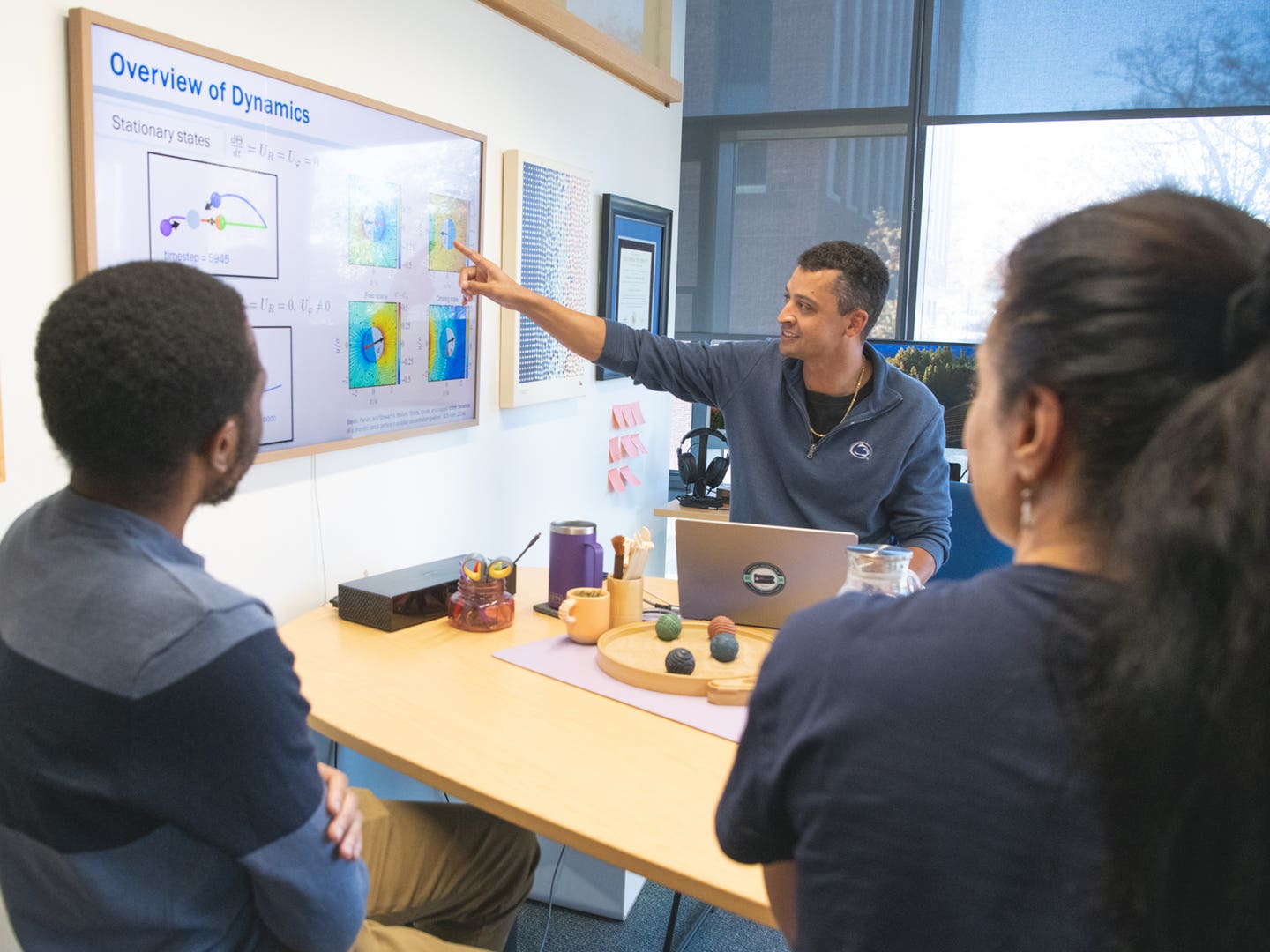Intelligent brain pacemaker revolutionizes Parkinson’s disease treatment
UCSF researchers are pioneering adaptive deep brain stimulation (aDBS) for Parkinson’s, showing it can reduce symptoms and improve sleep by personalizing treatment.

Shawn Connolly, lifelong skater turned artist and co-founder, poses in a workshop area at SF
Skate Club, a non-profit serving community youth through skateboarding. He is currently undergoing Direct-Brain-Stimulation treatment for Parkinson’s disease at UCSF. (CREDIT: Michael Fortes)
Two groundbreaking studies from UC San Francisco (UCSF) are bringing the promise of round-the-clock personalized care for Parkinson’s disease into focus. These studies demonstrate the potential of an implanted device to manage both movement problems during the day and sleep disruptions at night.
The technology behind this advancement is called adaptive deep brain stimulation (aDBS). This innovative approach leverages artificial intelligence (AI) to continuously monitor brain activity and adjust treatment in real time. By detecting changes in a patient’s symptoms, it delivers precisely calibrated electrical pulses to the brain.
This therapy complements traditional medications by adjusting the level of stimulation based on the drug's activity. For example, the device decreases stimulation when medications are active to avoid overstimulation and increases it when the effects of the medication start to fade, preventing stiffness.
This marks the first successful demonstration of “closed-loop” brain implant technology in Parkinson’s patients as they go about their daily lives. The device’s ability to respond to brain signals creates a feedback loop that allows it to address symptoms as they appear. Patients also have control over the system, with the ability to deactivate the device or switch out of adaptive mode using a handheld controller.
In one of the studies, researchers conducted a clinical trial with four participants, comparing the performance of aDBS to an earlier brain implant technology known as constant deep brain stimulation (cDBS). This earlier version delivers a steady stream of electrical stimulation, regardless of the patient’s current symptoms.
To personalize the treatment, each participant was asked to identify their most troubling symptom. The new aDBS technology reduced these symptoms by an impressive 50%.
Related Stories
These results were published in Nature Medicine. Dr. Philip Starr, co-director of UCSF’s Movement Disorders and Neuromodulation Clinic and one of the study's senior authors, has spent over a decade laying the groundwork for this breakthrough. His early work in 2013 helped identify the abnormal brain rhythms associated with Parkinson’s, and by 2021, his team had pinpointed specific brainwave patterns tied to motor symptoms.
Dr. Starr highlighted the significance of the achievement, saying, “This is the future of deep brain stimulation for Parkinson’s disease.” He explained that while researchers had long been interested in creating a self-regulating DBS system, only recently have the necessary tools become available to implement such technology in patients' homes.
Earlier this year, UCSF researchers led by Dr. Simon Little demonstrated the potential of adaptive DBS to alleviate insomnia, a common issue for Parkinson’s patients. In a separate study published in Nature Communications, Little’s team showed how aDBS could adapt to the sleep-wake cycle, potentially improving sleep quality for these patients.
Dr. Little, who co-authored both studies, explained, “The big shift we’ve made with adaptive DBS is that we’re able to detect, in real time, where a patient is on the symptom spectrum and match it with the exact amount of stimulation they need.” This personalized approach marks a significant departure from the constant stimulation provided by earlier DBS models.
Parkinson’s disease affects around 10 million people worldwide. It arises from the loss of dopamine-producing neurons in the brain regions responsible for controlling movement. This loss not only leads to motor symptoms like tremors and stiffness but can also cause non-motor issues, including mood disturbances, motivational deficits, and sleep problems.
Levodopa, a common medication used to treat Parkinson’s, helps replenish dopamine levels but comes with challenges. When dopamine levels peak due to the medication, patients may experience uncontrolled movements, or dyskinesia. As the medication wears off, tremors and stiffness return.
Some patients opt for traditional cDBS devices, which provide a constant level of stimulation to alleviate these fluctuations. However, cDBS can sometimes overcorrect or undercorrect symptoms, leading to excessive movements or stiffness.
The goal of the new aDBS system is to address these issues by adapting to a person’s fluctuating dopamine levels. Dr. Starr and Dr. Little worked to create a system that could recognize brain signals tied to different symptoms and respond accordingly.
Research has shown that these signals come from the subthalamic nucleus (STN), a deep brain region that coordinates movement. The challenge was that constant DBS also stimulates the STN, which could interfere with the detection of these signals.
To work around this, the researchers identified alternative signals in a different brain region, the motor cortex. Unlike the STN, the motor cortex signals remain detectable even with DBS stimulation. The next step was to develop a system capable of using these signals to control DBS in a home setting, rather than just in a lab.
Over the course of several months, postdoctoral scholars Carina Oehrn, Stephanie Cernera, and Lauren Hammer developed personalized algorithms that could analyze each patient’s unique brain activity and deliver appropriate stimulation based on real-time changes in symptoms.
The significance of this development extends beyond Parkinson’s treatment. John Ngai, director of the National Institutes of Health’s Brain Research Through Advancing Innovative Neurotechnologies® (BRAIN) Initiative, commented on the breakthrough, saying, “This personalized, adaptive DBS embodies The BRAIN Initiative’s core mission to revolutionize our understanding of the human brain.”
While DBS has traditionally focused on managing daytime movement symptoms, there’s been a growing recognition of the non-motor symptoms that impact patients’ lives, including insomnia. Dr. Little’s separate trial aimed to address this gap by testing adaptive DBS’s ability to improve sleep.
In a study involving five patients, including one with dystonia, researchers showed that the device could recognize brain activity linked to different sleep states. It also detected patterns that indicated when a person was likely to wake up.
Building on these findings, Dr. Little and Dr. Starr’s teams have begun testing new algorithms to optimize aDBS for sleep. Their first sleep-related aDBS study was published last year in Brain Stimulation, and the results are encouraging.
As research into closed-loop DBS continues, scientists are exploring its potential applications in other neurological and psychiatric conditions. Dr. Starr envisions a future where neurostimulation therapies can be used for a wide range of disorders, saying, “We see that it has a profound impact on patients, with potential not just in Parkinson’s but probably for psychiatric conditions like depression and obsessive-compulsive disorder as well.”
This pioneering work suggests we’re on the cusp of a new era in personalized, adaptive neurostimulation therapies, with the potential to dramatically improve the quality of life for millions of patients.
Note: Materials provided above by The Brighter Side of News. Content may be edited for style and length.
Like these kind of feel good stories? Get The Brighter Side of News' newsletter.
Rebecca Shavit
Science & Technology Journalist | Innovation Storyteller
Based in Los Angeles, Rebecca Shavit is a dedicated science and technology journalist who writes for The Brighter Side of News, an online publication committed to highlighting positive and transformative stories from around the world. With a passion for uncovering groundbreaking discoveries and innovations, she brings to light the scientific advancements shaping a better future. Her reporting spans a wide range of topics, from cutting-edge medical breakthroughs and artificial intelligence to green technology and space exploration. With a keen ability to translate complex concepts into engaging and accessible stories, she makes science and innovation relatable to a broad audience.



